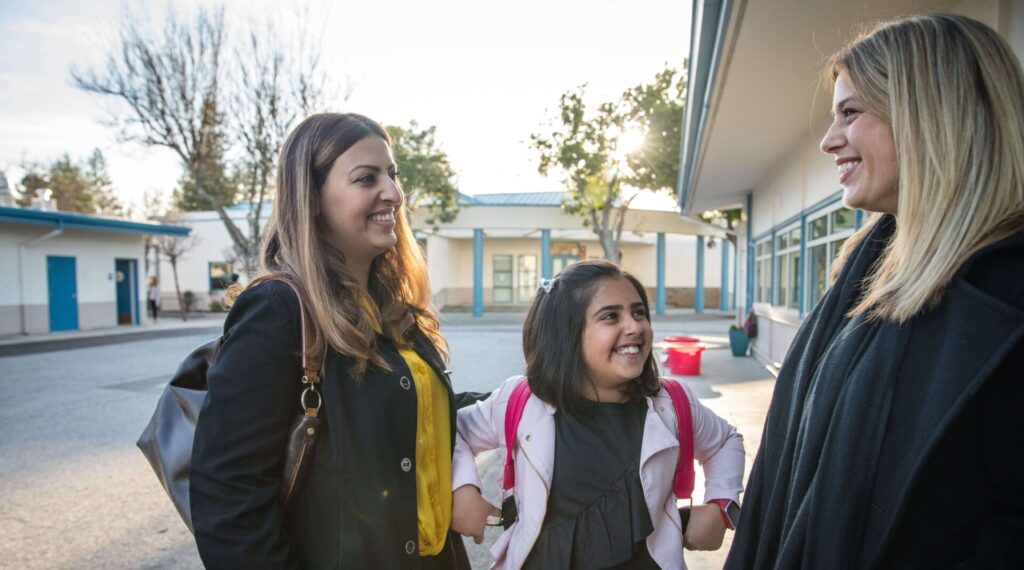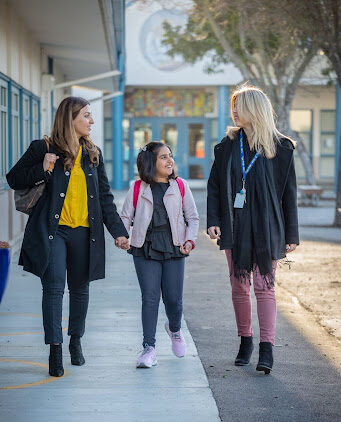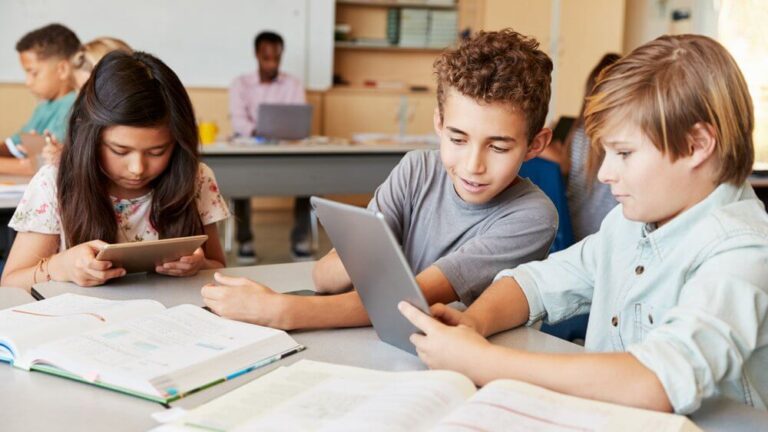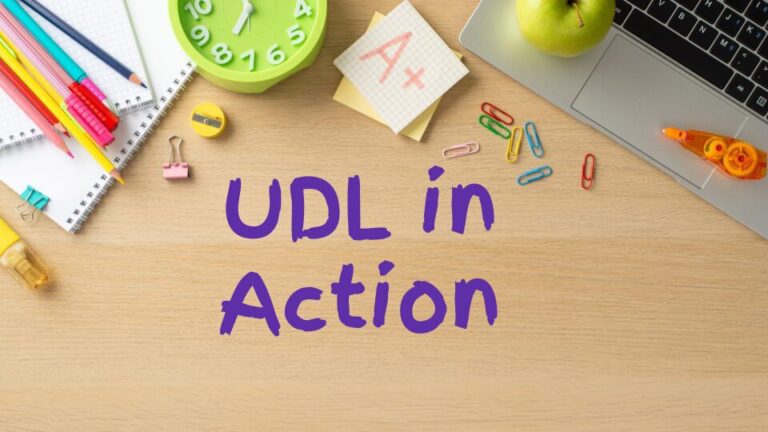The success of a child in school can be greatly impacted by a strong home-to-school relationship and family engagement in schools. It’s a common goal of educators, but it’s hard to accomplish. Research shows that supportive behavior from parents or guardians correlates with student achievement and success. Learn why family engagement in schools is critical.
In order to build strong two-way communication and collaboration between families and schools, educators must take a proactive approach. Some impactful and proactive strategies include:
- Establish relationships that go beyond the classroom
- Shift from one-way announcements to two-way, empathetic discussions
- Equip families with tools and knowledge to reinforce learning at home
As educators, our role extends beyond the classroom. We need to invest time cultivating personal connections, actively listening to parents, and equipping families with curricular knowledge. This empowers families to become active participants in their child’s education. In this blog, we outline a three-step process for building effective partnerships between families and teachers.
Step 1: meet with your families
Start with personal connections with students and families to build trust and engage families in the learning process. One proven way to build a positive relationship is to initiate it during a face-to-face event. This can be done in person or through a video platform like Zoom, Google Meet. This ensures you are also growing connections with working families. Devalin Jackson, a SFUSD admin, shared how they purposefully partner with after school programs and government services, such as the boys and girls club or the public library, to ensure that families and students are connected. “We are all serving the same folks, let’s ensure that resources are getting back to our students and families”. Meeting your families where they are is an opportunity to provide parents with information about the curriculum and classroom expectations and set up critical technology connections.
A productive year between teachers, students, and families begins with these initial face-to-face interactions. In order to facilitate open communication channels, teachers, students, and parents need to be able to put a name to a face as soon as possible. It demonstrates a teacher’s commitment to knowing their students beyond just names on a roster when they try to connect in person first.
GOING DEEPER- It is important that you make the best use of your opportunities to connect with families. Do you have other departments in your district that benefit from stronger family engagement, and how can you work with them? Are there agencies outside your schools that you can work with to enhance your relationships with families?
Step 2: move from one-way to two-way conversations
Teachers’ two-way dialogue is the key to parent-teacher communication. When teachers desire to engage families in deeper and more meaningful ways, two-way dialogue is the key. When teachers open these conversations, they demonstrate care and promote collaboration with families. Teachers may not be aware of their students’ strengths, challenges, or interests but parents are. Families can provide helpful insights to the teacher in how to best educate their child as an individual.
Open communication allows parents to benefit beyond simply sharing their perspective and insight into their child. They gain a deeper understanding of the curriculum, classroom dynamics, and how they can reinforce lessons at home through regular communication with teachers. Students can be supported better and in a more expansive way. It is important for teachers, students, and parents to have the opportunity to discuss learning often and easily. Starting with this foundation allows families and teachers to work together as a team to ensure each child has what they need in order to succeed academically and emotionally.
GOING DEEPER- Make sure you keep a close eye on the conversations you are having with your families. Do you have families who are not engaged? Have you set clear expectations and norms around communication? Can families easily ask you questions or provide input?
Step 3: engage families in the learning process
Parental support of learning at home is undoubtedly beneficial for improving student achievement. A teacher’s insight and ability to inform parents about what their child is working on in school is an important step. Many classrooms go a step further and share how families can practice needed skills outside of school. Teachers empower families to become active partners in their child’s education through family engagement strategies in schools.
Reinforcing skills at home can have a huge impact on a child’s growth. Teachers empower families to become active partners in their child’s education creating a bond focused on the students academic growth. Teachers can shift to this focus by providing families with a transparent look into how each student is progressing and clearly communicating ways that families can use to support in-home learning aligned with the curriculum. Parents learn concrete ways to work with the teacher to assist their students in mastering academic milestones and developmental milestones by receiving this information.
Families are always seeking transparency when it comes to learning. It is important for families to be aware of where their child is academically and how they can support that growth. All too often academic performance is distilled into a test score or grade. A visual portfolio provides families with a deeper understanding of what is happening in the classroom, as well as the opportunity for the teacher to tell families how to support their child’s learning at home with Seesaw. See how Seesaw helps connect families to learning.
GOING DEEPER- How will you engage your families in the learning process? What is your plan to inform families of their child’s progress? What support do you need from families to ensure that students are learning at their highest ability?
In conclusion
A positive relationship between home and school plays a tremendous role in improving student achievement. Establishing an in-person connection, opening lines of communication, and giving families insight into what takes place during the school day are great strategies to proactively build a partnership. Remember, every interaction is an opportunity to strengthen these critical relationships.
As you launch on your family connection journey, consider leveraging a tool like Seesaw that can seamlessly facilitate communication and provide visibility into learning.
“Parents are not just notified of what’s going on or what grade their child got… they are able to see the learning taking place,” said Josh Ehret, Instructional Technology Specialist at Wichita Public Schools.
The investment you make into building these relationships will provide you rewards in student achievement, family engagement, and overall educational satisfaction. A tool like Seesaw that can seamlessly facilitate communication and connect families to learning. Start building trusting relationships today and watch your classroom transform. Discover more benefits of family engagement in schools with Seesaw.
Did you love these ideas and want to learn more ways to engage families? Read the next blog here!






